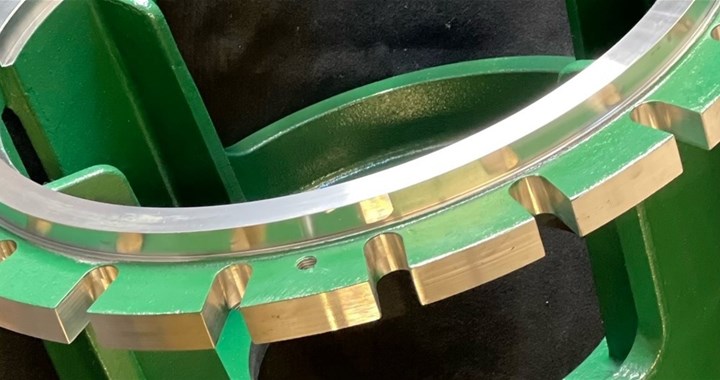State of the Art Parts: Hydro Parts Solutions recently supplied a new bearing cartridge and adaptor piece for an OH2 pump from a Caribbean rum distillery. The customer had no spares for these components and was in a critical situation because both parts had failed and were unusable.
 The OEM had provided a minimum delivery time of 10-12 weeks for both parts. Because these parts were necessary for the equipment to be returned to service, the customer sought out a qualified vendor who could provide the components in a shorter turnaround time. Hydro Parts Solutions was able to offer a 5-6 week delivery.
The OEM had provided a minimum delivery time of 10-12 weeks for both parts. Because these parts were necessary for the equipment to be returned to service, the customer sought out a qualified vendor who could provide the components in a shorter turnaround time. Hydro Parts Solutions was able to offer a 5-6 week delivery.
This job was particularly challenging because there were no samples to reverse engineer, only rough sketches from the customer. While it is standard to request samples to reverse engineer, because of the tight timeframe, Hydro Parts Solutions created a model using the sketches and the design experience and engineering resources within Hydro. Continue reading



 When the experts at Hydro were called on to reverse-engineer parts for a large circulating water pump in the Caribbean, they were concerned to discover an OEM-provided suction bell had failed during service. All internal ribs were lost and the bearing holder was found loose within the assembly. Not only had the suction bell failed, but the customer was facing excessive lead times for the parts needed for the refurbishment of the pump.
When the experts at Hydro were called on to reverse-engineer parts for a large circulating water pump in the Caribbean, they were concerned to discover an OEM-provided suction bell had failed during service. All internal ribs were lost and the bearing holder was found loose within the assembly. Not only had the suction bell failed, but the customer was facing excessive lead times for the parts needed for the refurbishment of the pump.
 Hydro is excited to announce that our very own Ares Panagoulias has been chosen by Pumps and Systems Magazine as one of “2021’s 10 Pump Professionals to Watch”. This annual list is compiled and curated by the editors and the editorial board of Pumps and Systems Magazine, the premier industry publication for the North American Pump Industry. The list recognizes some of the best and the brightest in the pump industry.
Hydro is excited to announce that our very own Ares Panagoulias has been chosen by Pumps and Systems Magazine as one of “2021’s 10 Pump Professionals to Watch”. This annual list is compiled and curated by the editors and the editorial board of Pumps and Systems Magazine, the premier industry publication for the North American Pump Industry. The list recognizes some of the best and the brightest in the pump industry. An Eye Toward the Future
An Eye Toward the Future
 Hydro is proud to announce the inauguration of the Centaur Monitoring and Diagnostic Center at the HydroAire Service 40th Street location in Chicago, Illinois, USA. The M&D Center supports end-users who monitor their critical equipment through
Hydro is proud to announce the inauguration of the Centaur Monitoring and Diagnostic Center at the HydroAire Service 40th Street location in Chicago, Illinois, USA. The M&D Center supports end-users who monitor their critical equipment through 
